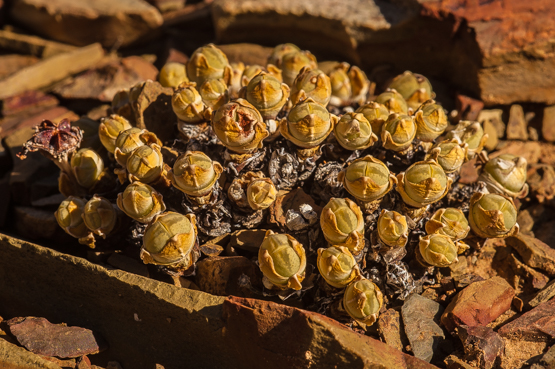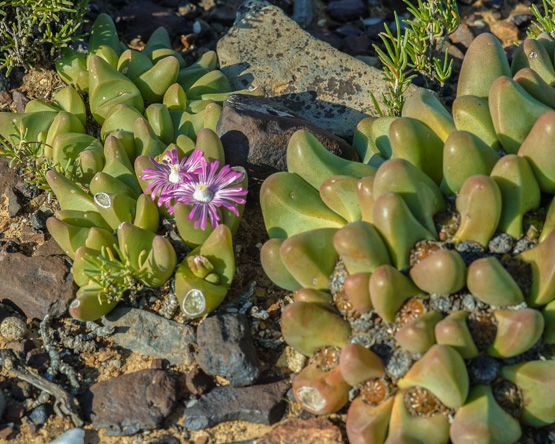The outer skin may also be enclosed in a layer of cork or wax; this will make the surfaces of leaves and stems practically waterproof. It will also prevent the heating of the leaf, which lowers temperature and thereby the rate of transpiration from the leaf. This is found in many succulents and other xerophytes. Plants can raise the amount of wax when the temperatures are very high or the relative humidity is very low.
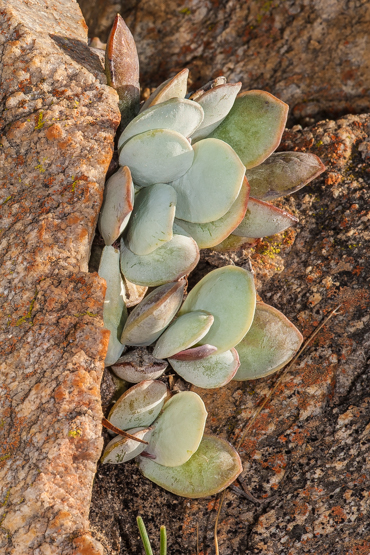
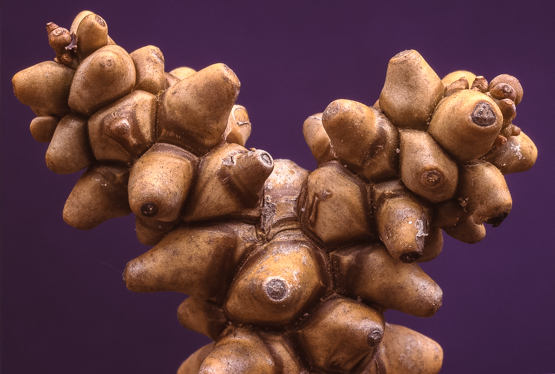
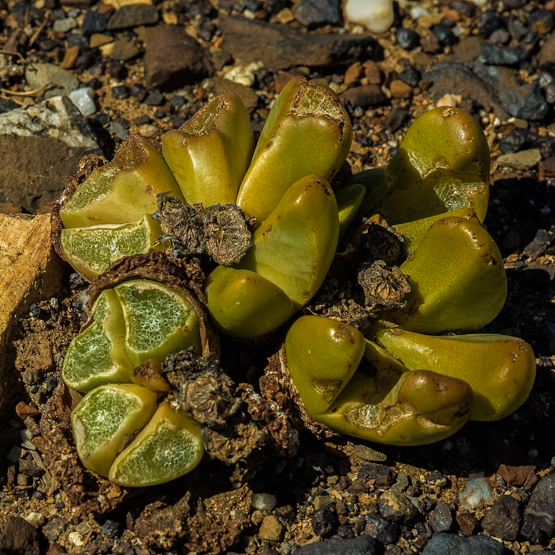
Usually the plant’s water is bound in substances that do not release water easily, so that even if the plant is damaged, the inside stays moist for a long time. (Tanquana prismatica).
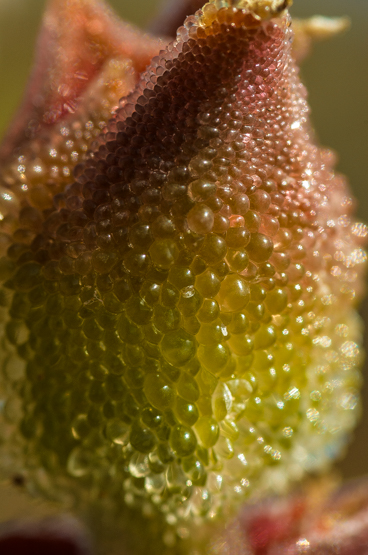
The bladder cells we met before, do more than storing water. When the plants start suffering from drought stress, the cells collapse and thereby obstruct the passage of air to the breathing pores so that water loss is reduced. The picture shows a flower bud of Mesembryanthemum guerichianum.
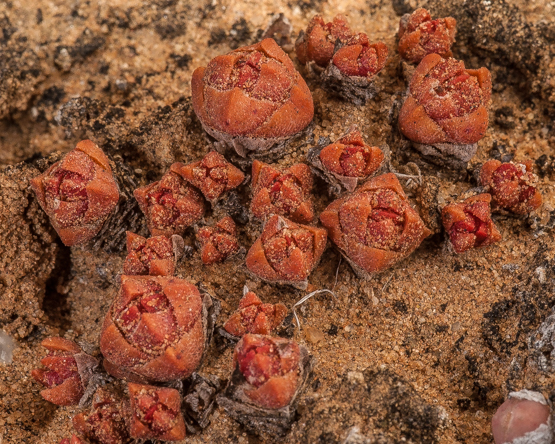
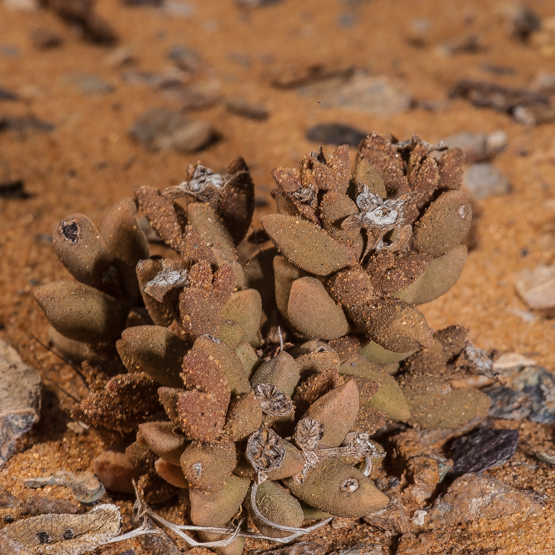
EVASION
Unlike animals, plants can not move away when the going gets tough. They have to endure the bad times in situ and that is one of the reasons why we find many succulents in shade: under shrubs, in rock crevices etc.
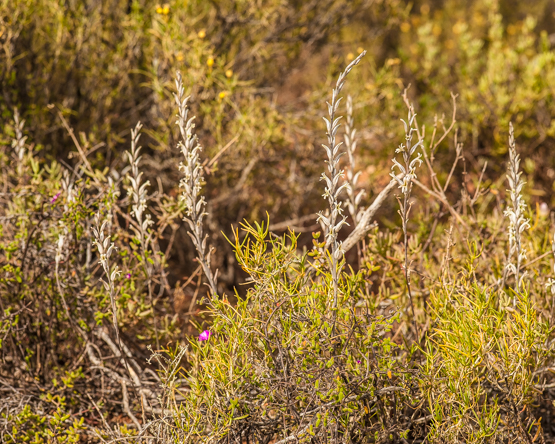
There are many advantages in sheltering under another plant: less sun, less wind, lower temperatures, difficult to be found and reached by browsing animals. In these 2 cases (Haworthia arachnoidea above and Gasteria disticha below), only the inflorescences give away the fact that there is a succulent hiding in these bushes — and you have to look very carefully to find the rest of the plant itself.
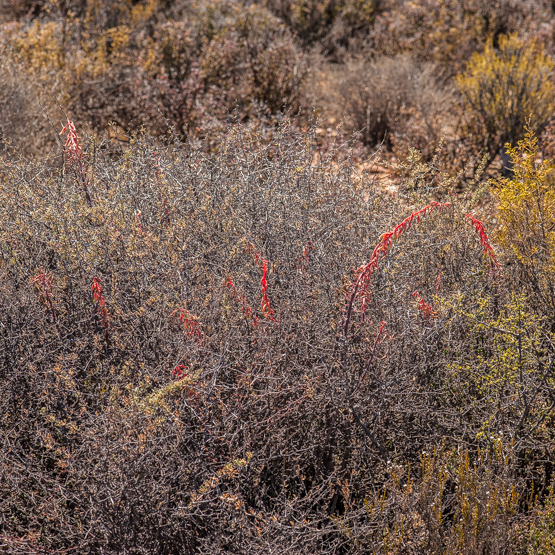

Hiding underground also minimises water loss from the surface of the plant. Experiments have shown that in plants such as this Lithops julii ssp. fulleri, the loss is about a fifth lower in plants that are buried than in exposed ones.
RECYCLING
Many members of the mesemb family, especially the dwarf ones, are able to recycle water from old leaves to new ones.
As the soil dries out, the older leaves are gradually sacrificed and their water content is translocated to and stored in the younger ones.
Within each old pair of leaves a new, but somewhat smaller one develops and stays dormant, while the dry remains of the old leaves form a protective layer of insulation for the new ones. When the rainy period starts again, the new pair bursts through the old skin, ready for action. It has been found that this adaptation enables plants to survive for about a year without any moisture from outside.
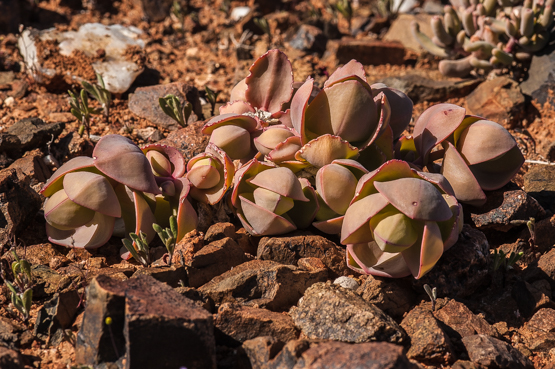
Below are pictures of Antimima pumila in the growing season (early September), at the end of October and in high summer 3 months later, showing different stages of water recycling.


